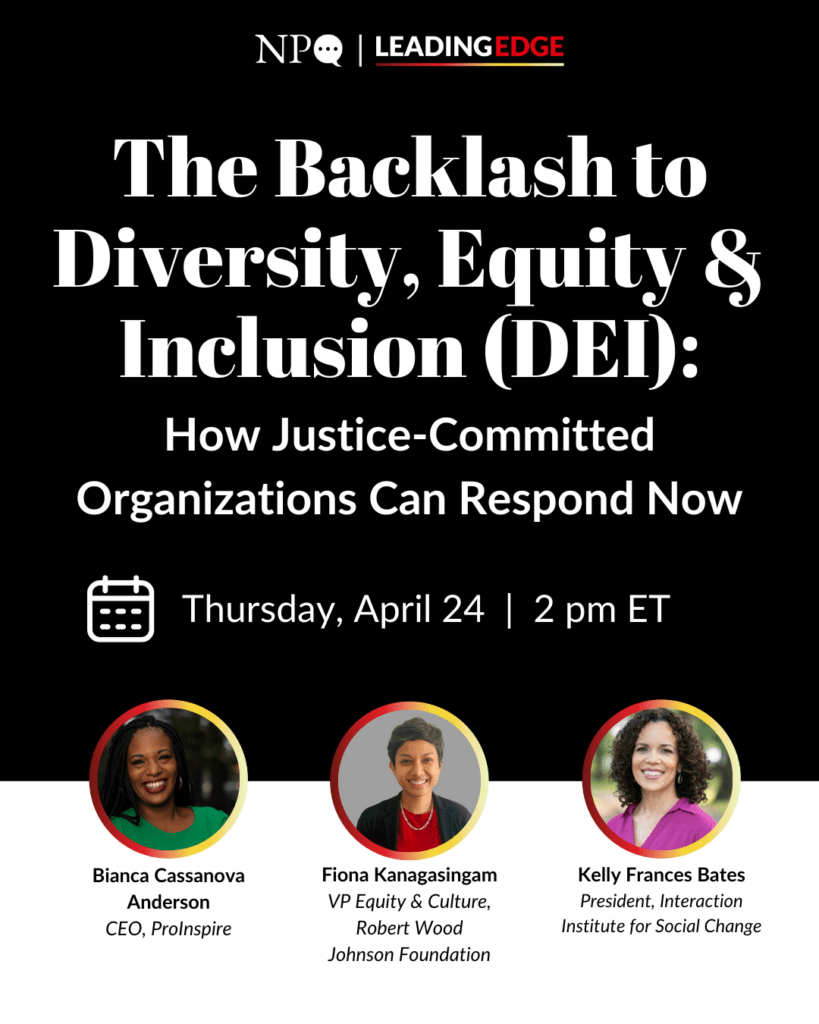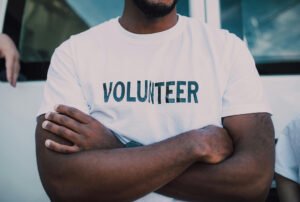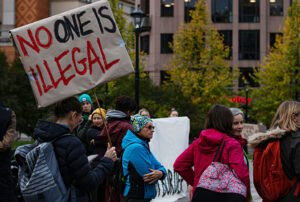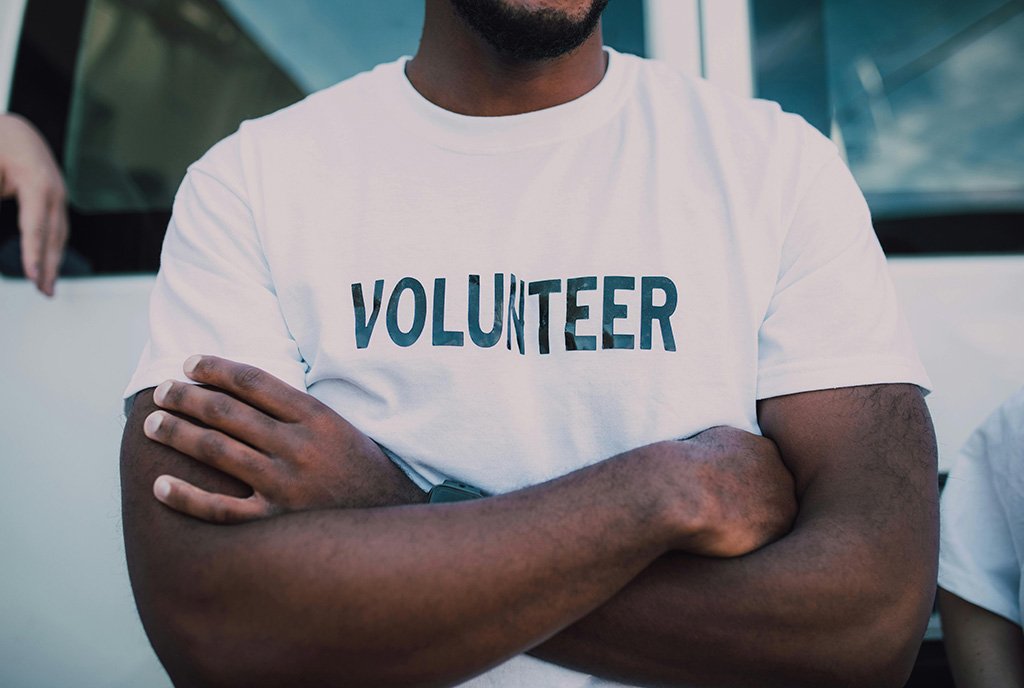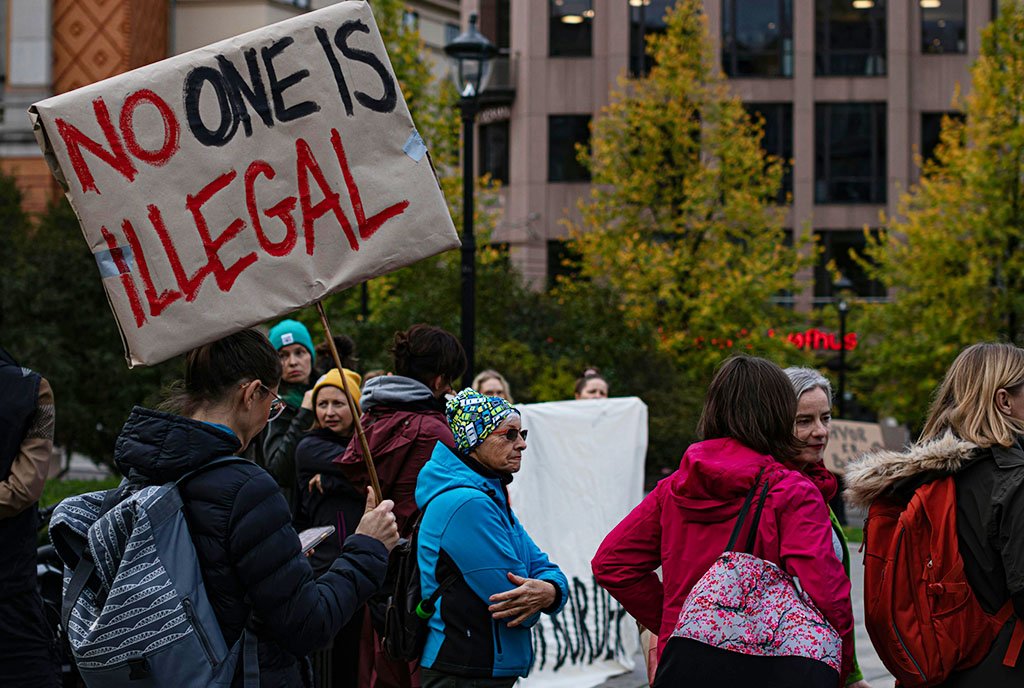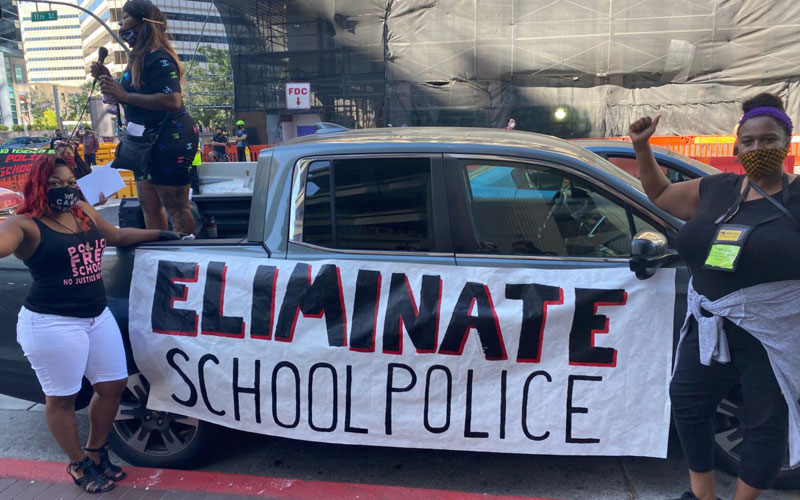
We write to you today with urgency and excitement.
Our urgency comes from the critical issues to be addressed in our country—the climate crisis, racial injustice, worsening income inequality as a result of the pandemic, opioid addiction, gaps in healthcare access, crumbling community infrastructure in vast parts of this nation, to name just a few.
Our excitement derives from our work as trainers and capacity builders for hundreds of local, regional, and national nonprofits. We need more community-based nonprofits, especially those providing critical services, to be part of the collective public pressure to make legislators and policymakers confront these issues and engage in the dialogue needed to arrive at just and sustainable solutions. We believe every group of any size has a role to play to build and mobilize community power for the larger good.
We speak from experience. As the founder of Community Votes, Louisa has helped large direct service organizations turn more citizens into voters. Mohan has registered and mobilized voters during several national elections and witnessed the power of neighborhood groups educating and informing people and bringing them to the polls.
Countering the Boom and Bust of National Election Cycles
There is a real (and diminishing) opportunity for nonprofits to build on last year’s historic voter turnout. If we don’t seize this moment, we are on course to experience a huge slide backward because of a predictable and much-studied effect: the greatest number of people pay attention to national issues and come out to vote in presidential elections. Less people show up for mid-term ones, and even fewer cast ballots for local elections and primaries.1 Many organizing efforts, and the funding that supports them, also follow this cycle. This is a real problem. Paying attention only to infrequent national elections means an enormous opportunity to make ongoing, systemic changes at the local level is lost.
Nonprofits can help to counteract this boom-and-bust cycle. They can speak to their clients and constituents about the importance of local and primary elections and the need to be involved beyond elections—to hold political leaders accountable for making sure people-centered policies remain the priority outside of election cycles. An easy way for a nonprofit to become a hub of election information is to visit Nonprofit Vote’s website and find ways to encourage more people to show up for all elections, beginning with this year’s local races and next year’s midterm races. Organizations whose services are funded by state and local governments can educate their clients that ongoing electoral and post-electoral engagement allows them to elect and influence the people who make decisions about the critical, government-funded services they receive.
Beyond Elections, Local Advocacy Matters
Beyond voter mobilization and electoral engagement, nonprofits can educate their staff and clients about the power of engaging with local and regional organizing and advocacy. Our communities need to know that building grassroots power in this way really matters to their lives. The Fight for $15 is a prime example. In 2012, the Service Employees International Union (SEIU) created the campaign because they recognized the US Congress was not going to raise the $7.25 federal minimum wage. Nine years later, seven states plus the District of Columbia have pledged to increase their minimum wage to $15 or higher; this year, 74 cities, counties, and states are also raising their minimum wage.2 The success of this campaign means millions of workers will get a raise, and many will no longer be working for a poverty-level wage. As a direct result of building power and influence from the ground up, members of both major political parties are now considering raising the federal minimum wage.
The work of the Black Organizing Project in Oakland, California is another example of successful year-round, locally focused organizing. For nine years, the Project worked to remove police from the Oakland, CA school district. After massive public protests questioning the role of police, their work paid off. In June 2020, the Oakland School Board voted to replace the 67-member police unit working in public schools with social workers, counselors, and restorative justice ambassadors.3
The Pathways to Building Power Already Exist
Many community-based organizations providing services already incorporate organizing and power-building activities in their portfolio. In New York City, for example, Asian Americans for Equality, Neighbors Together, CHHAYA Community Development Corporation, and MinKwon Center for Community Action all provide direct services: emergency food, legal services, housing assistance, and access to public benefits. They each also prioritize leadership development and organizing so constituents can speak about their communities’ needs and engage with elected representatives and policymakers to get those needs met.
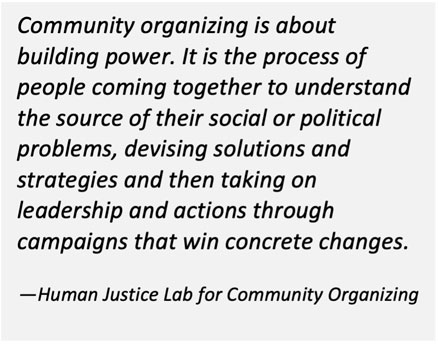
The good news is that social service organizations already have the critical ingredients to begin organizing and building local power.4 First, relationships are the foundation for organizing, and service groups are connected, often deeply, to clients and consumers directly affected by social and political problems. Service organizations can also readily accomplish an organizer’s second task: providing political education.
This is not just optimism speaking. We have good data that shows, for example, that nonprofits can lead effective voter mobilization efforts, a key strategy within power building. Nonprofit Vote has proven that integrating nonpartisan conversations about voting within existing community-based programs and activities leads to increased voter turnout. Their research shows the nonprofits that did this not only reached people without a history of voting, they also succeeded in getting them to vote at higher rates than comparable voters.5
The same logic applies to other kinds of community mobilization efforts. Community-based nonprofits joined a coalition of residents, local politicians, and some small businesses to advocate against a decision by the mayor of New York City and the governor of New York State to give a $3 billion in tax break to Amazon, the largest internet company in the world, so they would build a new corporate campus in Long Island City. The organizing work started with a series of community meetings to discuss the deal and its implications for gentrification and displacement, and the lack of a guarantee of jobs going to New Yorkers. The collective advocacy that started with these meetings resulted in Amazon reversing its decision to locate a new headquarters in New York. Since then, the city and real estate developers are working on being more transparent and more mindful of neighborhood concerns about local projects.6
Addressing Barriers to Building Community Power
As we’ve discussed, social service organizations are primed to engage their constituents in building power. Yet, the reality is organizations face stumbling blocks when trying to realize their potential to do this work. Transforming inequitable systems and policies requires organizations working together and collaborating, but too often competition for funding and recognition fosters rivalry, not partnership. Also, organizations that experience chronic underfunding and understaffing might find it overwhelming to think about a new voting, civic engagement, or advocacy activity. Compounding these barriers is the hesitancy of some leaders to take on legislative advocacy and/or election-related activities.
These challenges are real but not insurmountable. For example, if integrating power building work feels daunting and unfamiliar for a service organization, first learning from, even partnering with, existing advocacy groups is a great start. A modest learning goal is to understand how other groups build power. As a starting point, sign up for the Building Movement Project’s monthly newsletter for tools to help you identify ways to insert organizing and community leadership development within existing programs. Another action is to identify local advocates and organizers working in your community and ask them what they need to be successful and explore how your nonprofit’s resources and programs can help. Perhaps this means providing free meeting space or inviting them to conduct political and issue-focused education sessions for staff, board and program participants that get to the root causes of current problems. An additional step is to regularly communicate to staff and clients opportunities to join the advocates’ actions.
An example of this type of “win-win” partnership happened during the 2020 elections. The New York Immigration Coalition recruited participants from youth-serving nonprofits to join their get-out-the-vote phone banks. This was an effective strategy because the Coalition needed volunteers and had the capacity to train them, and the nonprofits had volunteers who wanted to learn how to be more civically engaged.
Too often, a misunderstanding of the law results in nonprofit tax-exempt organizations avoiding anything related to advocacy and or elections. As Bolder Advocacy explains, “Law gives 501(c)(3)s generous limits for lobbying. Yet a widespread perception is they cannot lobby. Getting involved in the legislative process and policy is not just an appropriate role, it is vital.”7 This also holds true when it comes to elections. Nonprofits are prohibited from providing any direct or indirect support to a political party or candidate. But nonpartisan election-related activities are allowed, including registering voters, encouraging people to vote, and explaining the connection between voting, local issues and the decisions made by elected leaders.
Bridge the Gap: Social Service and Social Change
As capacity builders we’ve synthesized ideas and recommendations from a number of sources to create the guiding framework below, Bridge the Gap: Social Service and Social Change.8 This framework is a primer and we encourage you to dig deeper into the source materials that inspired it, especially Building Movement Project’s Nonprofits Integrating Community Constituent Engagement Guide. We find this one-page framework to be an effective way for social service organization leaders and board members to engage in the discussion of expanding their activities to incorporate power building.
Bridge the Gap: Social Service and Social Change
| SOCIAL SERVICE Service delivery core to mission |
ORGANIZATIONAL PLANNING |
SOCIAL CHANGE System change core to mission |
Some Action Steps to Bridge the GapMake a clear and explicit connection between mission and desired social change. Include annual plans to develop staff and constituent civic leadership. Identify resources (time, talent, and money) for social change activities. |
||
|
SOCIAL SERVICE Participate in alliances to support social service sector |
EXTERNAL ACTION |
SOCIAL CHANGE Advocacy and activism to address root causes are core activities, often in partnership |
Some Action Steps to Bridge the GapUnderstand laws regarding nonprofits, public policy advocacy and elections. Understand the policy making process and how to advocate for policy and/or legislative changes. Take public positions on policies and legislation that directly impacts clients and communities served. Join an alliance to strengthen impact on policy that addresses larger social issues. Partner with an activist organization to engage in direct actions that push for positive social change and fight against systemic racial inequities. Provide opportunities for clients to do community organizing, engage in rallies, marches, or protests. Sign up for our free newslettersSubscribe to NPQ's newsletters to have our top stories delivered directly to your inbox. By signing up, you agree to our privacy policy and terms of use, and to receive messages from NPQ and our partners. |
||
|
SOCIAL SERVICE Deliver needed services to clients |
CONSTITUENT AND CIVIC LEADERSHIP DEVELOPMENT | SOCIAL CHANGE
Constituents the agents of change |
Some Action Steps to Bridge the GapTrain and educate constituents about their rights within larger systems. Sponsor forums on issues and policies that affect clients and their communities. Promote open communication between policymakers, clients, and community members. Provide opportunities for clients to be outreach workers and/or peer educators. Encourage voting, register voters, provide nonpartisan info about elections, candidates and issues. |
||
|
SOCIAL SERVICE Focus on strengthening service delivery |
INTERNAL ACTION |
SOCIAL CHANGE Identified ways with limited resources and current funding to do social change work |
Some Action Steps to Bridge the GapGive opportunities for board and staff to learn about root causes of issues facing clients. Meet with constituents to learn their views on key issues beyond service delivery. Involve constituents in decision-making, goal-setting, and program planning processes. Integrate social action activities into operations, strategic plans and/or job descriptions/evaluations. Proactively promote and implement diversity, equity and inclusion within the staff, board, culture, and systems. Find external support to strengthen internal capacity to take up social change actions. |
||
Of course, bridging the gap between social service and social change may require expanding or reorienting an organization’s mission toward transformational change. Strategic planning consultants can play an important role here. Consultants are well situated to get staff and board to think deeply about the root causes of the problems their programs address. Discussions will likely identify the need for changes in conditions, laws, policies, or levels and types of government support. This in turn leads to recognizing how critical community education and organizing are to create public pressure for the needed changes—and then each group can decide what shifts to make in this direction.
A further note here about transformative change and the contradictions nonprofits face: A common form of advocacy in the services sector is directed at maintaining or expanding government funding for programs. While securing resources to deliver high quality social services is important, ultimately service providers must decide if their long-term goal is to address underlying systems of inequity and injustice. This requires looking at root causes of community problems and building the power and capacity of people to change the policies, structures, and institutions that negatively impact their lives. It may even include eventually putting themselves out of business. We believe service organizations should take a hard look at their program models and think expansively about ways they can contribute to a world in which their current services are no longer needed.
We recently used the Bridge the Gap: Social Service and Social Change framework to help the Kingsbridge Heights Community Center develop a strategic plan to address the most pressing issues facing the people they serve: domestic violence, lack of living wage jobs, and affordable housing. While they run a strong domestic violence program, they did not have the capacity, resources, or bandwidth to create housing or employment programs—but they knew if these two problems were not confronted, they would never be able to achieve their mission of helping people live independent, self-sufficient lives free of violence.
The planning process created a significant shift in perspective. Leadership understood their organization alone could not solve their neighborhood’s critical problems, and that by partnering and collaborating, they had a better chance of fulfilling their mission. This was reflected in their planning decisions to join a local housing coalition and invite advocates to conduct workshops on tenant rights for their staff and clients. They also decided to work with the local politicians, the business improvement district, and other community partners to develop a workforce development plan to meet local needs. Reaching beyond their organization also allowed them to expand their efforts to reduce domestic violence. Given their significant expertise, they decided to serve as a resource to other organizations on how to promote healthy relationships and prevent domestic violence.
Our Calls to Action
Our vision is a substantial expansion of social service nonprofits acting as hubs of civic engagement offering pathways for clients’ greater political involvement. Following the example of good organizers who end every meeting with a specific ask, we end here with specific asks of the nonprofit field.
Capacity Builders: Prompt, encourage, and push groups you work with to consider whether their existing service delivery approach is an effective long-term strategy. Review the organizational planning action steps in Bridge the Gap: Social Service and Social Change with your clients and highlight practical next actions.
Board Members: Help your Board of Directors support rather than resist social change work. Review Board Source’s Advocacy and Ambassadorship tools and templates. Invite an expert to discuss the importance of advocacy and power building at a board meeting so all the members understand the question is not “can we do advocacy” but rather how. Refer to the external action section of Bridge the Gap for next actions.
Nonprofit Staff: Review the constituent and civic leadership development steps in Bridge the Gap to identify ways to build leadership among the people you serve. Also, check out the Right Question Institute’s “Why Vote?” tool to be able to answer the questions people have about voting. Health care providers sign up with Vot-ER so that doctors, nurses, and health staff can easily provide information to patients about registering to vote.
Executive Directors: Reframe the purpose of your organizations to include a social change focus. Start with a light lift: use all of your organization’s communication platforms (internal email, website, social media, staff meetings, and board meetings) to remind people to register and vote in the next primary and general elections—and say why it matters. Use Bolder Advocacy’s assessment tool to understand what it takes to do advocacy and to identify additional opportunities to become a more effective social change advocate and partner. Refer to all action steps in Bridge the Gap for next actions.
Foundations: Support pilot projects to learn what is needed to create strong, sustainable partnerships between organizing and advocacy groups and social service organizations. Ask your capacity building grantees how they incorporate conversations about social change within their consulting engagements. Provide annual funding so organizations can integrate nonpartisan voter and civic engagement within their programs every year, not just in election years.
It is time for service organizations to expand their advocacy work beyond the fight for their own funding. It is time to support clients, staff, boards, and donors in building power. The stakes—locally and nationally—have never been higher.
Notes
- National turnout was 66% in 2020 and 50% in 2018.
- “Raises from Coast to Coast in 2021,” National Employment Law Project.
- “Oakland school board unanimously agrees to eliminate its police force,” EdSource.
- “What is community organizing about?,” Human Justice Lab for Community Organizing
- “Engaging New Voters: If Nonprofits Won’t, Who Will?,” Nonprofit VOTE.
- “A Year After Amazon Rejection, Both Sides of Battle Applying Lessons Learned,” The City.
- “Yes, Nonprofits, You Can Lobby,” Bolder Advocacy.
- These suggestions are inspired by and adapted primarily from the Building Movement Project’s Nonprofits Integrating Community Constituent Engagement Guide. Other sources include Nonprofit New York’s Key Areas of Nonprofit Excellence and the Minnesota Council of Nonprofits’ Principles and Practices for Nonprofit Excellence.
Louisa Hackett has more than 25 years of consulting experience with New York City nonprofit organizations. In 2013, she founded Community Votes, an initiative that leverages the connections nonprofits have in local communities to engage voters and, ultimately, strengthen those communities through active participation in the electoral process. Louisa serves on the Board of Directors of the Essex County Family Justice Center and is a member of the Tenants Association of Montclair and leads their Committee of Homeowners in support of rent control. Louisa can be reached at lhackett@communityvotes.org.
Mohan Sikka was Managing Director for Leadership Development at Community Resource Exchange, New York City’s premiere nonprofit consulting firm for groups fighting poverty and advancing justice. He currently heads his own firm, Sikka Associates, and continues to work in close partnership with CRE, Praxis Philadelphia, RoadMap and the leadership initiatives of the Haas Jr. Fund. Mohan’s consulting practice encompasses planning, coaching, DEI and teambuilding with a strong emphasis on partnership and a systems-based approach. Mohan volunteers with electoral organizing efforts. He can be found in Brooklyn, NY, at mohansikkanyc@gmail.com and on LinkedIn.

